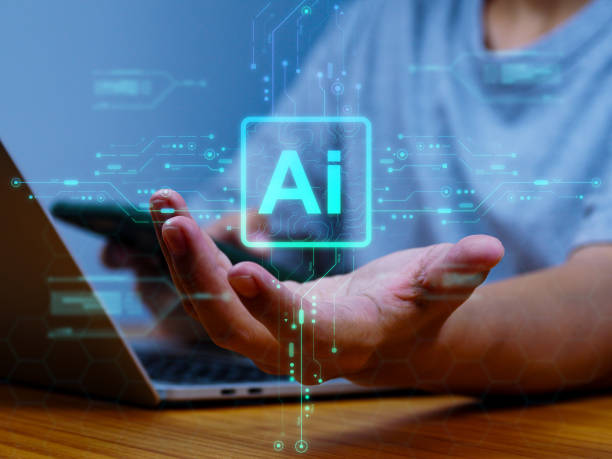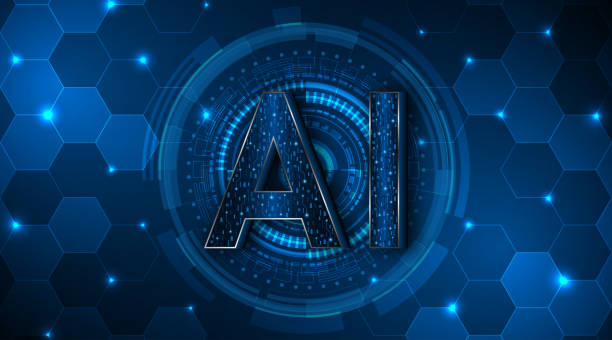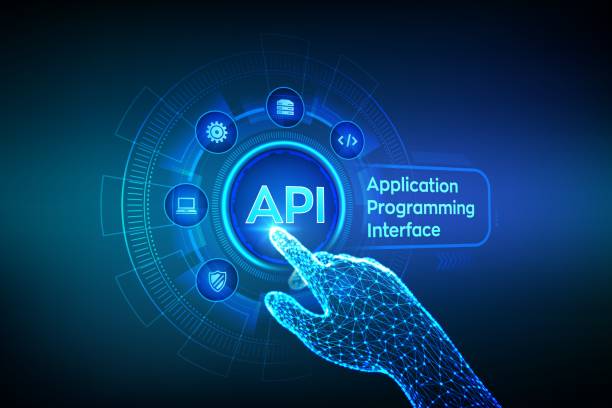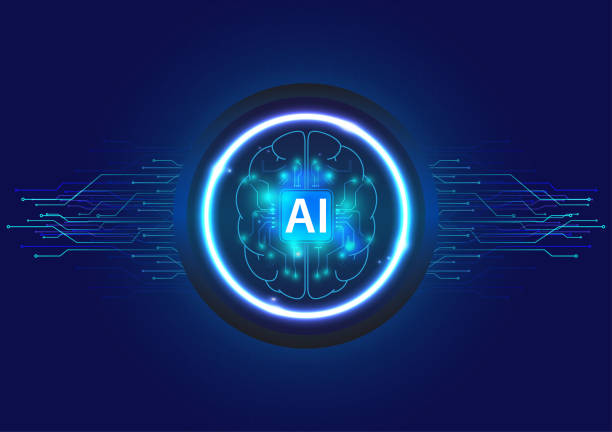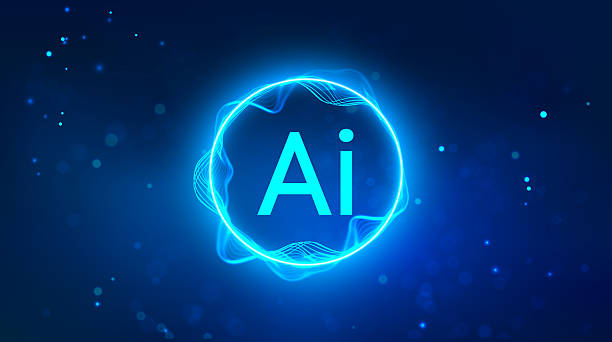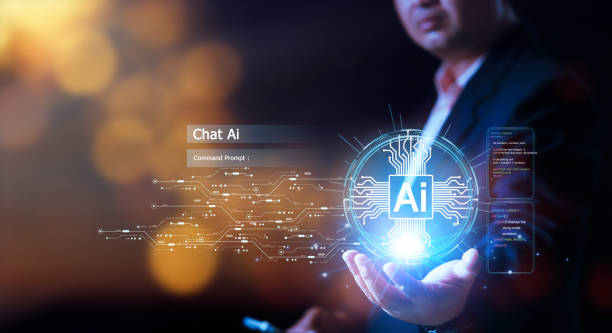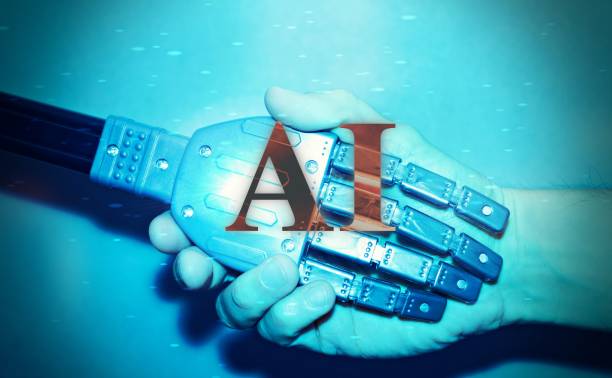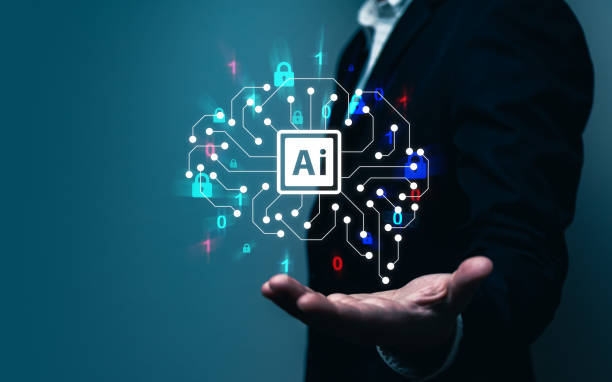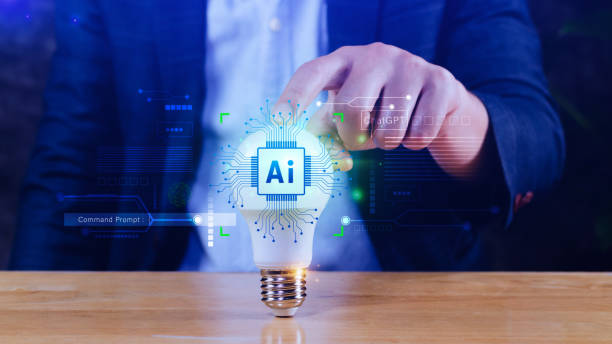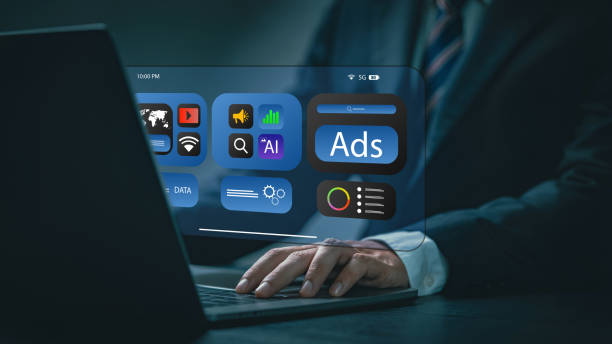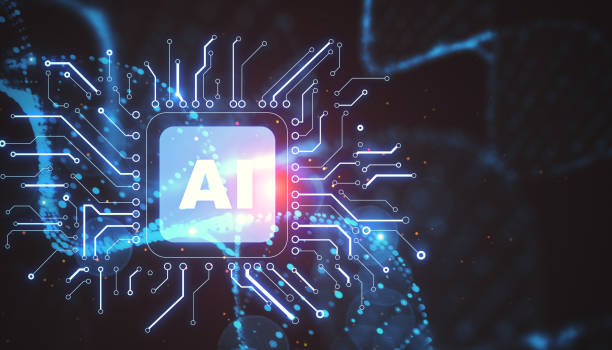What is an Artificial Intelligence Robot? A Comprehensive Definition and Key Concepts
Today, the term #Artificial_Intelligence_Robot is widely heard in various fields, but the precise understanding of its concept remains vague for many people.
Generally, an artificial intelligence robot refers to a system or software agent that, using artificial intelligence algorithms, is capable of performing tasks that normally require human intelligence.
These tasks can include learning, reasoning, problem-solving, natural language understanding, and decision-making.
Artificial Intelligence itself is a broad branch of computer science that deals with the development of systems that can think and act like humans.
The artificial intelligence robot, utilizing this knowledge, seeks to automate various processes.
Artificial intelligence robots can appear in various forms, including chatbots, virtual assistants, industrial robots, and even self-driving systems.
The main goal of developing an artificial intelligence robot is to increase efficiency, reduce costs, and provide better services to users.
With the ever-increasing advancements in the field of artificial intelligence, it is expected that artificial intelligence robots will play a more important role in our daily lives.
Don’t have a company website yet and are missing out on online opportunities? With professional company website design by Rasaweb,
✅ Double the credibility of your business
✅ Attract new customers
⚡ Free consultation for your company website!
Architecture and Main Components of an Artificial Intelligence Robot
An #Artificial_Intelligence_Robot usually consists of several key components that, by working together, enable the performance of various tasks.
These components include:
- Sensors These components are responsible for collecting information from the surrounding environment.
In a chatbot, the sensor can be the user’s text input.
In an industrial robot, the sensors can be temperature, pressure, or image sensors. - Processor This section is responsible for processing the information collected by the sensors and extracting useful information from it.
In this stage, artificial intelligence algorithms such as machine learning and natural language processing are used. - Memory The artificial intelligence robot needs memory to store information about the past and use it for future decision-making.
- Decision Maker This section is responsible for making decisions based on processed information and memory.
- Actuators These components are responsible for performing physical or virtual actions.
In an industrial robot, the actuator can be a robotic arm.
In a chatbot, the actuator can be a text response to the user.
In general, the architecture of an artificial intelligence robot is designed to continuously learn, improve itself, and adapt to different conditions.
This feature makes the artificial intelligence robot a powerful tool for solving complex problems.
Types of Artificial Intelligence Robots and Their Applications
#Artificial_Intelligence_Robots come in various types, each designed for specific applications.
Some of the most common types of artificial intelligence robots include:
- Chatbots These robots are designed to interact with users through text or voice.
Chatbots can be used to provide customer support, answer frequently asked questions, and perform other similar tasks. - Virtual Assistants These robots can perform various tasks such as setting reminders, sending emails, and playing music.
Virtual assistants are usually controlled by voice. - Industrial Robots These robots are designed to perform repetitive and dangerous tasks in industrial environments.
Industrial robots can be used for welding, painting, packaging, and other manufacturing processes. - Self-Driving Systems These systems can drive vehicles without human intervention.
Self-driving systems are currently used in cars, trucks, and other vehicles.
In addition, artificial intelligence robots have many applications in other fields such as medicine, education, finance, and entertainment.
For example, artificial intelligence robots can be used to diagnose diseases, provide personalized training, manage investments, and create entertaining content.
| Robot Type | Application |
|---|---|
| Chatbot | Customer Support |
| Virtual Assistant | Personal Task Management |
| Industrial Robot | Production Automation |
| Self-Driving System | Vehicle Navigation |
Click here to preview your posts with PRO themes ››
Advantages and Disadvantages of Using Artificial Intelligence Robots
Using #Artificial_Intelligence_Robots has many advantages, including:
- Increased Efficiency Artificial intelligence robots can perform tasks faster and more accurately than humans.
- Cost Reduction Artificial intelligence robots can reduce labor costs.
- Improved Quality Artificial intelligence robots can improve the quality of products and services.
- 24/7 Availability Artificial intelligence robots can be available around the clock.
However, using artificial intelligence robots also has disadvantages, including:
- Initial Cost Developing and deploying artificial intelligence robots can be expensive.
- Complexity Artificial intelligence robots can be complex and require technical expertise for maintenance and support.
- Ethical Concerns The use of artificial intelligence robots can raise ethical concerns, such as job loss and discrimination.
- Current Limitations Currently, artificial intelligence robots are not yet able to perform all the tasks that humans can perform.
By considering the advantages and disadvantages, organizations and individuals can decide whether using an artificial intelligence robot is right for them.
Artificial intelligence robots have great potential to improve our lives, but they must be used responsibly and with consideration of ethical issues.
Is your online sales not as expected? With Rasaweb, solve the problem of low sales and poor user experience forever!
✅ Increase visitor-to-customer conversion rate
✅ Create an enjoyable user experience and increase customer trust
⚡ Take action now to receive a free consultation!
Challenges of Developing and Deploying Artificial Intelligence Robots
Developing and deploying #Artificial_Intelligence_Robots presents numerous challenges.
Some of these challenges include:
- Data Scarcity A lot of data is needed to train artificial intelligence algorithms.
Collecting and labeling this data can be time-consuming and costly. - Shortage of Experts The number of artificial intelligence experts is currently limited.
Attracting and retaining these experts can be difficult for organizations. - Technical Problems Developing and deploying artificial intelligence robots can face many technical problems.
- Resistance to Change Some people may resist the use of artificial intelligence robots.
To overcome these challenges, organizations must prioritize investment in research and development, training experts, and managing change.
Also, collaboration between industry, academia, and government can help accelerate the development and deployment of artificial intelligence robots.
Artificial intelligence robots promise great transformations in the future, but to realize this potential, existing challenges must be effectively managed.
What Will the Future of Artificial Intelligence Robots Be?
The future of #Artificial_Intelligence_Robots looks very bright.
With the ever-increasing advancements in the field of artificial intelligence, it is expected that artificial intelligence robots will play a more important role in our lives.
Some of the key trends that will shape the future of artificial intelligence robots include:
- Deep Learning Deep learning is a powerful technique in artificial intelligence that allows robots to learn from a lot of data.
- Natural Language Processing Natural language processing allows robots to understand and interact with human language.
- Computer Vision Computer vision allows robots to see and understand images.
- Robotics Advances in robotics allow robots to perform more complex physical tasks.
By combining these technologies, artificial intelligence robots will be able to perform much more complex tasks and be used in a wider range of industries.
Artificial intelligence robots have great potential to improve our lives, but they must be used responsibly and with consideration of ethical issues.
The future of artificial intelligence robots lies not only in technology but also in how we interact with it.
The Impact of Artificial Intelligence Robots on the Labor Market
One of the main concerns about #Artificial_Intelligence_Robots is their impact on the labor market.
Some experts believe that artificial intelligence robots can replace many jobs, while others believe that artificial intelligence robots can create new jobs.
In general, it seems that artificial intelligence robots will mostly affect repetitive jobs and routine tasks.
Jobs that require creativity, critical thinking, and social skills are less at risk of being replaced by artificial intelligence robots.
| Skill | Importance |
|---|---|
| Creativity | Very High |
| Critical Thinking | Very High |
| Social Skills | High |
| Technical Skills | Medium |
Click here to preview your posts with PRO themes ››
To prepare for the future of the labor market, individuals should focus on developing soft skills, continuous learning, and adapting to change.
Governments and organizations should also provide programs to retrain the workforce and support people who lose their jobs.
Ethical Issues Related to Artificial Intelligence Robots
The development and use of #Artificial_Intelligence_Robots raises important ethical issues.
Some of these issues include:
- Privacy Artificial intelligence robots can collect a lot of information about us.
How can individuals’ privacy be protected from artificial intelligence robots? - Discrimination Artificial intelligence algorithms can be discriminatory.
How can discrimination be prevented in artificial intelligence algorithms? - Responsibility If an artificial intelligence robot makes a mistake, who is responsible?
- Control How can we prevent artificial intelligence robots from getting out of control?
To address these ethical issues, there is a need to create legal and ethical frameworks that regulate the use of artificial intelligence robots.
Also, public awareness of ethical issues related to artificial intelligence robots should be raised.
Artificial intelligence robots are a powerful technology, but they must be used responsibly and with consideration of ethical issues.
Artificial intelligence robots should be directed towards the benefit of humanity.
How much does losing business leads due to a non-professional website cost you? Solve this problem forever with professional company website design by Rasaweb!
✅ Increase the credibility and trust of potential customers
✅ Attract new business leads more easily
⚡ Get a free consultation now!
How to Train an Artificial Intelligence Robot?
Training an #Artificial_Intelligence_Robot is a complex process that involves several steps.
The main steps in training an artificial intelligence robot are:
- Data Collection First, the data needed to train artificial intelligence algorithms must be collected.
- Data Preparation The collected data must be cleaned and prepared.
- Algorithm Selection A suitable artificial intelligence algorithm for the task at hand must be selected.
- Model Training The artificial intelligence algorithm is trained using the prepared data.
- Model Evaluation The trained model must be evaluated to ensure that it performs well.
- Model Optimization If needed, the trained model should be optimized to improve its performance.
The process of training an artificial intelligence robot can be iterative.
The model may need to be retrained with more data or the algorithm may need to be changed.
The artificial intelligence robot must be constantly learning and improving in order to perform well.
Resources and Tools Needed for Artificial Intelligence Robot Development
Developing #Artificial_Intelligence_Robots requires access to various resources and tools.
Some of these resources and tools include:
- Programming Languages Programming languages such as Python, Java, and C++ are used to develop artificial intelligence robots.
- Artificial Intelligence Libraries Artificial intelligence libraries such as TensorFlow, PyTorch, and scikit-learn provide a collection of tools and algorithms for developing artificial intelligence applications.
- Cloud Services Cloud services such as Amazon AWS, Google Cloud Platform, and Microsoft Azure provide the infrastructure needed to train and deploy artificial intelligence robots.
- Data Quality data is essential for training artificial intelligence algorithms.
- Artificial Intelligence Experts Developing artificial intelligence robots requires expertise in the field of artificial intelligence.
Using these resources and tools, individuals and organizations can develop powerful artificial intelligence robots and use them to solve various problems.
Choosing the right tool depends on the project’s needs. Artificial intelligence robots can be developed more effectively with the help of these tools.
Click here to preview your posts with PRO themes ››
Frequently Asked Questions
| Row | Question | Answer |
|---|---|---|
| 1 | What is an artificial intelligence robot? | An artificial intelligence robot is a machine capable of understanding, reasoning, learning, and problem-solving, and can perform complex tasks with relative autonomy. |
| 2 | What are the most important applications of artificial intelligence robots? | Main applications include industrial manufacturing, customer service (chatbots), medicine and surgery, self-driving transportation, space exploration, and military affairs. |
| 3 | What is the main difference between an artificial intelligence robot and a regular robot? | A regular robot only follows programmed instructions, while an artificial intelligence robot can learn from data, make decisions, and adapt to new environments. |
| 4 | How do artificial intelligence robots learn? | They learn through machine learning algorithms (such as deep learning, reinforcement learning) and processing vast amounts of data, identifying patterns, and improving their performance. |
| 5 | Can artificial intelligence robots have emotions? | Currently, artificial intelligence robots do not have real emotions in the human sense. They can mimic or detect emotions, but they do not have the understanding and experience of them. |
| 6 | What are the current limitations of artificial intelligence robots? | Limitations include the need for large amounts of data, the inability to understand abstract concepts, the lack of true creativity, ethical issues, and challenges of generalizability in new environments. |
| 7 | What is the role of artificial intelligence in the development of humanoid robots? | Artificial intelligence helps humanoid robots walk, maintain balance, understand their surroundings, interact with humans, and perform complex tasks. |
| 8 | How is the future of artificial intelligence robots predicted? | It is predicted that artificial intelligence robots will become smarter, more autonomous, and capable of performing more complex tasks in everyday life and industry, and their interaction with humans will increase. |
| 9 | Can artificial intelligence robots replace all human jobs? | It is unlikely that all human jobs will be replaced. Robots will take over many repetitive and dangerous tasks, but jobs that require creativity, empathy, and moral judgment will remain. |
| 10 | What ethical and social challenges are raised by the expansion of artificial intelligence robots? | Challenges include issues related to privacy, data security, ethical decision-making by robots, impact on employment, and accountability in the event of errors. |
And other services of Rasa Web Advertising Agency in the field of advertising
Intelligent Sales Automation: An effective tool for managing campaigns by optimizing key pages.
Intelligent Sales Automation: An effective tool for online growth by customizing the user experience.
Intelligent Conversion Rate Optimization: Designed for businesses looking to grow online through the use of real data.
Intelligent Digital Advertising: A novel service to increase website traffic through the use of real data.
Intelligent Digital Branding: A fast and efficient solution to increase click-through rates by focusing on Google Ads management.
And more than a hundred other services in the field of internet advertising, advertising consulting, and organizational solutions
Internet Advertising | Advertising Strategy | Advertorial
Resources
How Artificial Intelligence Changes Automatic Action in Our Lives
,Review of the Challenges of Chat GPT in Marketing and Websites
,What Will Be the Applications of Artificial Intelligence?
,Digit Humanoid Robot: A Combination of Artificial Intelligence and Motor Skills
To boost your business and be seen in the digital world, Rasa Web Afarin is your reliable partner. From website design with a modern user interface to comprehensive digital marketing strategies, we are with you every step of the way.
For consultation and information about our services, contact Rasa Web Afarin experts.
📍 Tehran, Mirdamad Street, next to the Central Bank, South Kazerun Alley, Ramin Alley, No. 6

